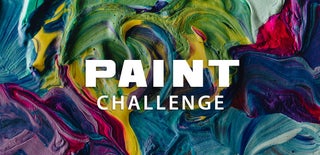Introduction: Glass Vase Painting
In this instructable, I will guide you through the steps from start to end, to paint and customize a glass vase. The piece is dishwasher and detergent safe so don't worry about it getting dirty! Get out your learning glasses and read on! Best of luck!
Supplies
Glass Vase
(Anything that is made out of glass)
Glass Paint:
Pebeo Vitrea 160 Glossy Glass Paint
Glass Paint Liner:
Pebeo 774000 Vitrail Stained Glass Effect Cerne
Brushes:
Any brush will work depending on size of the piece (Note that different brush sizes will be more effective according to the area size you are painting)
Step 1: Step 1: Getting Started
Gather all of the materials you will need for the artwork:
The list should look like this: 1) Glass paints (Names are in the the supply section.) Try to get at least one of each color of the color spectrum 2) Glass paint liner (Names are in the supply section.) I am using silver, but you can also use gold, bronze and etc... 3) Paint Brushes (try to have a variety of sizes) 4) Cup of clean water (for cleaning brushes) 5)Glass vase/cup/panel (the glass object that you are painting) Find a reference or sketch your idea on paper to practice
Step 2: Step 2: Drawing and Planning
Now that you have all of your supplies, find a clean sturdy surface to work on. You should wash the glass vase with warm water and dish soap before starting to clean it from any grease or oil marks. After leaving it to dry completely, start to outline your drawing with the glass paint liner. The lines should be thin and even but you can manipulate the lines with your fingers or q-tips to refine it into the shape you want before it dries (around 2 minutes on a dry surface.) Once you have your composition fully outlined you should be ready for step 3.
Step 3: Step 3: Coloring and Mixing
Now it is time to add colors! This is the fun part, but don't get too distracted with it and load up your artwork with too many colors. Too many colors will make the piece very busy and might make it look muddier so pick a few colors that matches with the mood you are going for. In my case, I picked 3 colors, "White, "Brown," "Laque Blue" and "Amaranthine" (purple).
Load the colors onto a palate (plastic works best) and dip your paint brush into it and taper it so the tip is loaded with a even amount of paint. Start painting the areas you want inside of the liner areas, making sure you have a even stroke. The paint has some viscosity so it will not run all over the place like watercolors. Once you are finished all the areas that you want to fill in, wait until it is completely dry, not tacky as going over it semi-dry might remove the paint. Once it is fully dry, go over it a second time, covering up spots that needs adjustments.
(Note*: The paint is still removable with water and rubbing if it is air dried. So if you make any mistakes, you can "erase" it and restart. You will need to bake it in a standard kitchen oven for it to be permanent. Steps for it will be posted down below.)
Step 4: Step 4: Finishing the Piece
Repeat the steps from step 3 with different colors until you have filled up your piece. If you are mixing 2 colors together like the color I mixed for the skin of the dancing girl, mix the paint like any other medium.
Tip: Adding lighter colors before the darker colors when mixing will make it easier to find color you are looking for. The reason is because it is easier to darken the paint the lightening it as the lighter it is, the more transparent it will be. Adding black on white will darken the paint in a few strokes while lightening black with white will take a lot more.
Step 5: Step 5: Finalizing and Baking
You should have a fully colored art work by this step. If you have anything you want to fix, you can still rub it off with water. Once you are completely satisfied with your art work, let if air dry for 24 hours before baking. Any ordinary domestic oven will work. 1) Place your artwork into a cold oven 2) Turn on the temperature to 160°C (325°F) 3) Allow it to bake for 40 minutes at a constant temperature of 160°C (325°F) 4) Once 40 minutes, take out the artwork carefully and let it cool off After baking, the artwork should be dishwasher safe (following recommendations) and resistant to detergents.
And you are done! You can use a flash light or light source to get some pretty cool reflections! The piece is ready for everyday use! Enjoy and share it to your friends!

Participated in the
Paint Challenge







